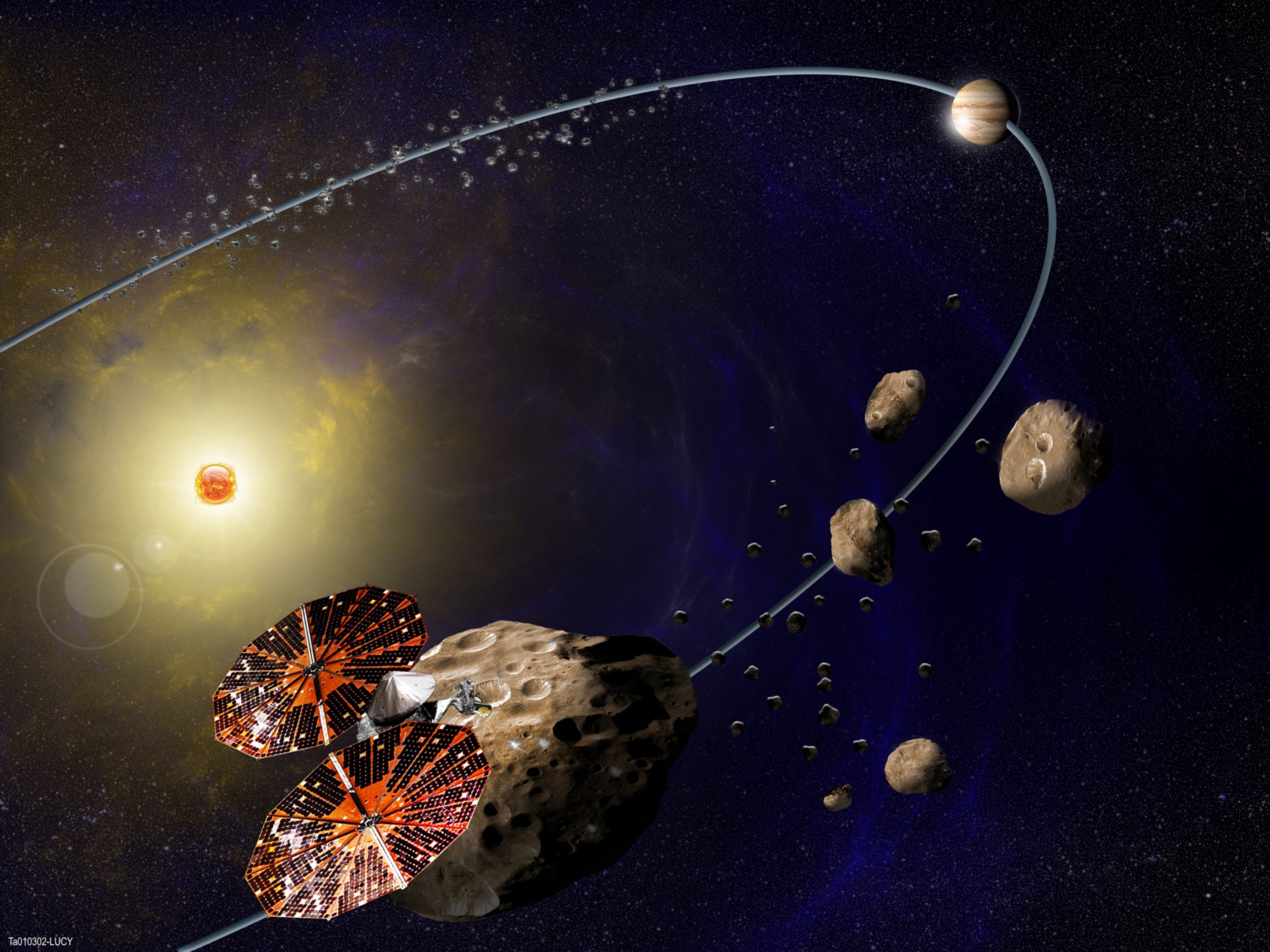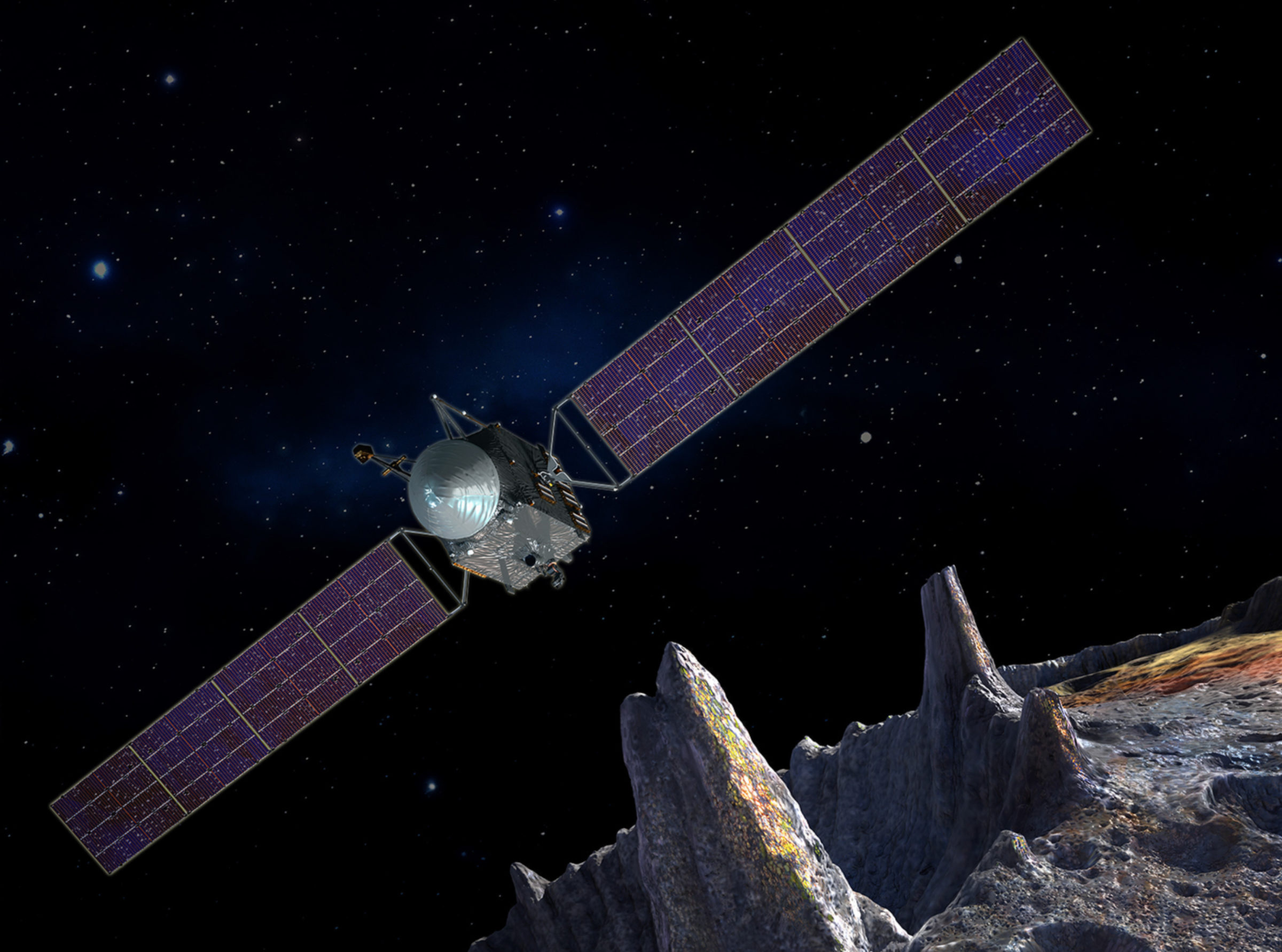Jason Davis • Jan 04, 2017
NASA is visiting 8 asteroids in 8 years. Here are 8 things to know about the missions
Today, NASA announced two new planetary science missions that, in total, will visit eight asteroids between 2025 and 2033. It will be a long wait, but that will eventually be eight new worlds in roughly eight years!
The spacecraft, named Lucy and Psyche, launch in 2021 and 2023. NASA says they will fill important gaps in our understanding of how the solar system was formed—when our sun was a mere 10 million years old.
Here are eight things to know about the missions.

1. Lucy will fly by multiple asteroids near Jupiter.
Lucy will visit one main belt asteroid and six Trojan asteroids. Trojans roughly share the same orbit as Jupiter and are held in place by the giant planet's gravity. Scientists aren't exactly sure where they came from—they could even be captured comets or Kuiper Belt objects.
The spacecraft launches in 2021. In 2025, it will whizz past a main belt asteroid between Mars and Jupiter, and arrive at its first Trojan target in 2027. Lucy will then proceed to visit five other Trojans, wrapping up its tour in 2033.
On a press call today, Lucy principal investigator Hal Levison explained that the probe is named after a famous 3.2 million year-old fossil of a human ancestor.
"These (Trojan asteroids) really are really the fossils of planet formation," he said.

2. Psyche is heading to a wicked-cool metal world.
In the main asteroid belt resides a one-of-a-kind (at least, so far as we've discovered) metal world named Psyche. It is composed of metallic iron and nickel, like Earth's core, and might have splatters of solid metal jutting off its surface.
Is Psyche the exposed inner core of what used to be a much larger planet that was battered by drive-by asteroid collisions? That's what Lindy Elkins-Tanton, the mission's principal investigator at Arizona State University in Tempe, hopes to find out.
"Out of our initial excitement, we just named our mission directly after what we're going to visit—Psyche," she said.
Psyche launches in 2023 and arrives in 2030. Unlike Lucy, it will slow down and enter orbit.
3. Lucy and Psyche are NASA's first competitively selected planetary missions in more than four years.
The last time NASA greenlit a competitvely selected planetary science probe was 2012.
In August of that year, the agency announced the selection of Insight, a Mars geophysical monitoring station originally slated to launch in 2016. Due to a leaky vacuum seal in its main science instrument, Insight's launch was pushed to 2018.
If you're wondering what a competitively selected mission is, scroll ahead to number five.
4. As a refresher, here's a little background about planetary science mission types.
There are three classes of planetary science missions: Discovery, New Frontiers and flagship missions.
Lucy and Psyche are Discovery missions. These are the least expensive items on NASA's mission menu, and are cost-capped at less than $500 million, not including launch and operations costs. Twelve Discovery missions have flown thus far, starting with the Near-Earth Asteroid Rendezvous (NEAR) probe in 1996.
New Frontiers missions are mid-tier, and have included New Horizons, Juno and OSIRIS-REx. The latter, now on its way to visit asteroid Bennu, has a price tag of about $800 million, including the cost of its Atlas V carrier rocket.
Finally, there are flagship missions—big, agency programs that take a lot of resources. The Curiosity and Mars 2020 rovers are flagships, as is the proposed Europa mission.
5. Lucy and Psyche were competitively selected—meaning some scientists got left out.
Lucy and Psyche were selected from an initial field of 27 Discovery mission contenders that was whittled down to five last year.
As Casey Dreier and Emily Lakdwalla wrote at the time, the Discovery program was originally supposed to offer flight opportunities every two years, but ongoing budget cuts to the agency's planetary science division have slowed that cadence.
The triumph of Lucy and Psyche, unfortunately, means three other missions were left on the table. One, the NEOCam asteroid hunting telescope, will continue to receive study funding for another year because it could be used to fulfill other NASA asteroid objectives.
The other two proposed missions would have headed to Venus, where an American probe has not been since Magellan entered orbit in 1990.
6. Lucy and Psyche are scientist-led missions.
Unlike flagship missions such as Curiosity, Discovery missions are managed more directly by their proposing teams.
Lucy PI Hal Levison is a scientist at the Southwest Research Institute in Boulder, Colorado. SwRI will lead the overall science investigation. NASA's Goddard Space Flight Center is providing mission management, systems engineering, and safety and mission assurance, and the spacecraft will be built by Lockheed Martin.
Psyche's science team is located at Arizona State University; as is PI Lindy Elkins-Tanton. NASA's Jet Propulsion Laboratory in Pasadena, California manages the Psyche mission. The spacecraft structure will be built by Space Systems / Loral.
7. Both spacecraft make use of heritage technologies.
When practical, NASA likes to use flight-proven hardware—often referred to as heritage technology. There are multiple benefits; it's usually cheaper if you don't have to develop new components from scratch, and it's always good to know that something has already flown in space successfully.
Lucy uses enhanced versions of science instruments that flew on the New Horizons and OSIRIS-REx missions, and some of Lucy's team members also come from those programs.
The Psyche spacecraft itself is very Dawn-like in appearance, and uses solar-electric propulsion—a technology vetted thoroughly during Dawn's ten-year mission.
8. The new missions have a Planetary Society connection.
I'd be remiss not to mention a Planetary Society connection to both missions: Our president, Jim Bell, is the deputy principal investigator for Psyche, and a co-investigator on Lucy.
Congratulations, Jim!
Support our core enterprises
Your support powers our mission to explore worlds, find life, and defend Earth. You make all the difference when you make a gift. Give today!
Donate

 Explore Worlds
Explore Worlds Find Life
Find Life Defend Earth
Defend Earth

